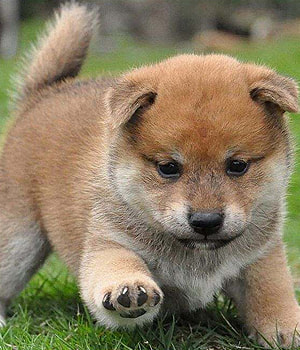Breed Info - Shiba Inu
Overview
|
Breed Group
Non-sporting Size Small How much exercise? Up to 1 hour per day Length of coat Short How much grooming? Once a week |
Sheds?
Yes Town or Country Either Type of home Small House Minimum Garden Size Small/Medium Lifespan Over 10 Years |
Description
Alert, active, attentive
Alert, active, attentive
A relatively recent newcomer from Japan, the Shiba Inu is a neat, tidy Spitz-style dog that shows every sign of becoming popular. Shiba Inu literally means ‘small dog’ and, ideally, this breed should look like a smaller version of the Akita.
Shibas originate in the mountainous inland areas of Japan, their work being that of a hunting dog, mainly of ground game, though they are occasionally called on to help track larger game, such as boar and deer.
A very alert, small dog, he gives the impression of being interested in everything going on around him. His size makes him ideal as a pet in such a highly populated country as Japan, where he is one of the most popular dogs. On first sight, one expects that he could be a somewhat yappy animal, but in fact he tends to watch and study rather than shout the odds.
The thick, dense undercoat keeps him very warm and copes with rain very efficiently. Colour wise, most of the specimens seen here are red, but the standard also allows him to be ‘red sesame’ or black and tan, as well as white with red or grey tinges.
Shibas originate in the mountainous inland areas of Japan, their work being that of a hunting dog, mainly of ground game, though they are occasionally called on to help track larger game, such as boar and deer.
A very alert, small dog, he gives the impression of being interested in everything going on around him. His size makes him ideal as a pet in such a highly populated country as Japan, where he is one of the most popular dogs. On first sight, one expects that he could be a somewhat yappy animal, but in fact he tends to watch and study rather than shout the odds.
The thick, dense undercoat keeps him very warm and copes with rain very efficiently. Colour wise, most of the specimens seen here are red, but the standard also allows him to be ‘red sesame’ or black and tan, as well as white with red or grey tinges.
| |||


